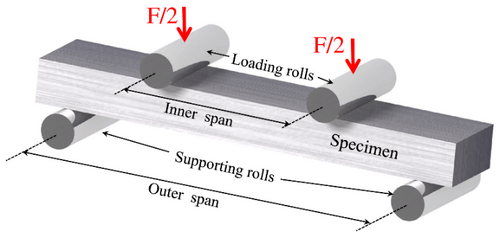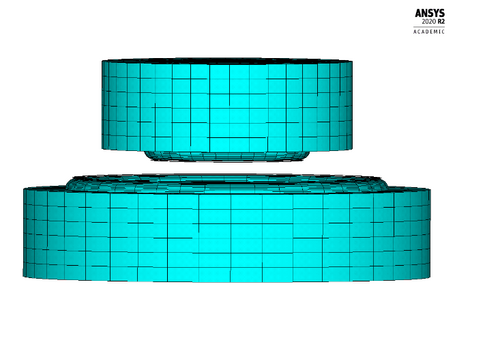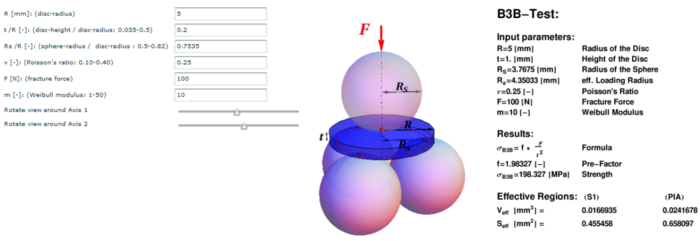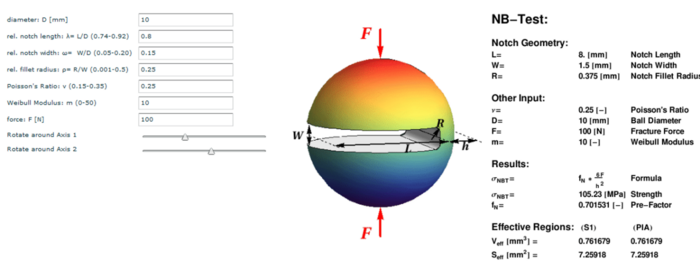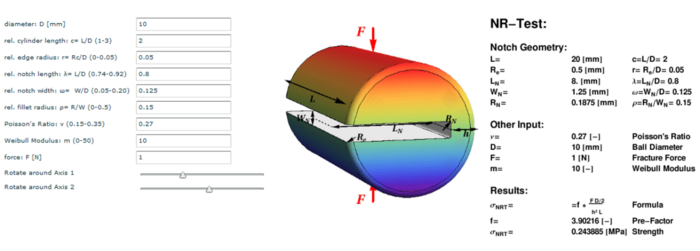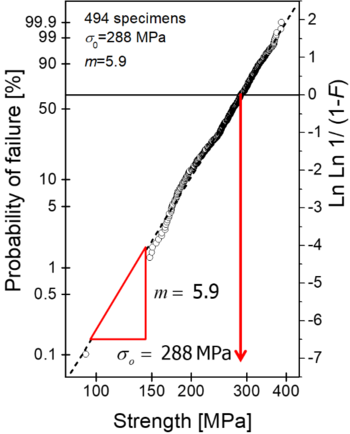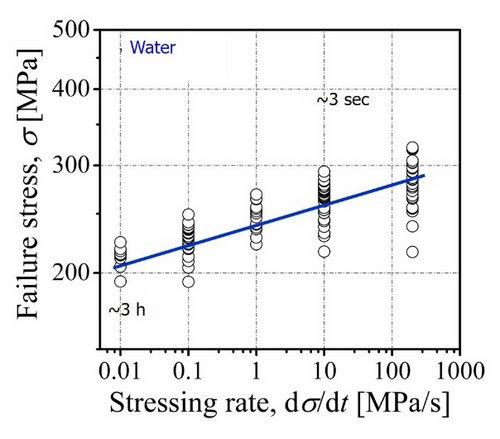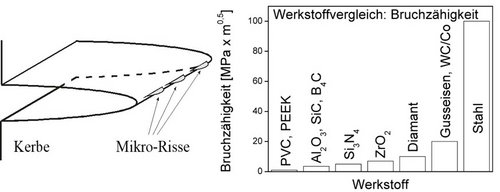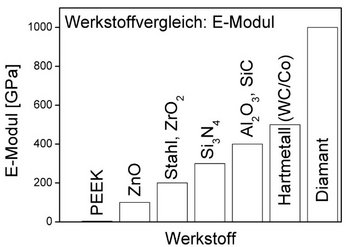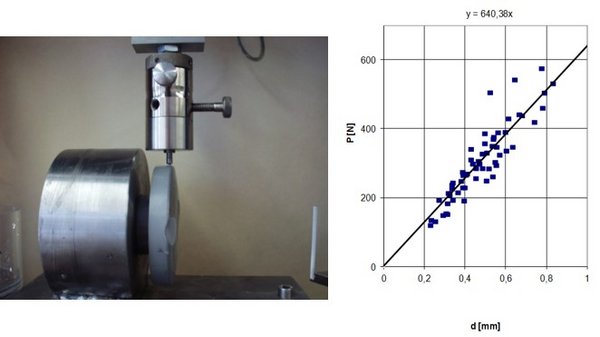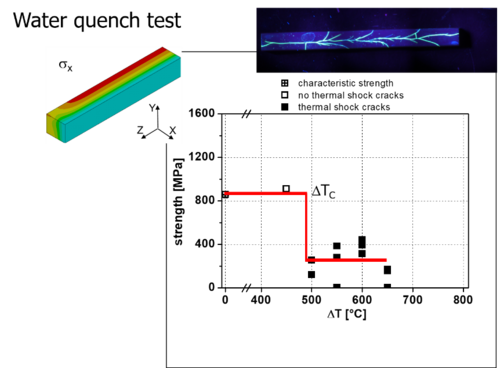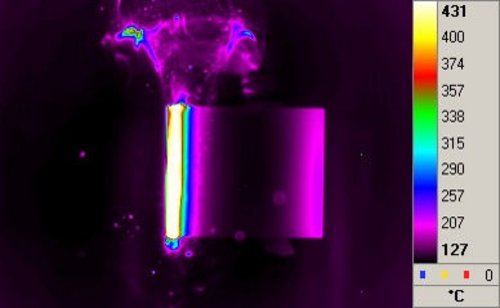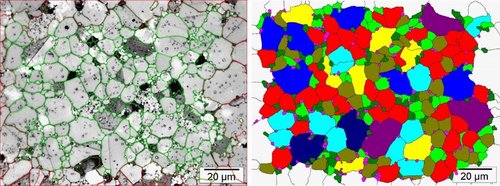There are cases where ceramic materials fail after a certain time, although the load is far below the characteristic strength of the ceramic, i.e. the strength decreases as a function of time. In these cases, slow ("subcritical") crack growth occurs. Cracks already present in the ceramic grow over time until they reach a critical size and the component breaks under loads that are below the characteristic strength of the material. At the ISFK, tests on slow crack growth are carried out using both bending tests and the ball-on-three-balls test.
Determination of fracture toughness
EN 1425-1, EN 14425-3, EN ISO15732, ISO 18756, ISO 21618, ISO24370, ASTM C1421
Young’s modulus can be seen as the resistance of a material to elastic deformation. It describes the stiffness of the material. At the ISFK, the Young's modulus of ceramics is determined using static methods (3 or 4-point bending). Thereby, the deflection of a bending specimen is measured as a function of the applied force.
Edge chipping is frequently observed when using brittle materials (e.g. paper machine linings or drills). In edge toughness tests, a Rockwell C indenter is pressed into the surface at a constant speed at defined distances from the edge. The load increases until breakage occurs and a chip detaches. The peak load is registered and the distance of the indentation from the edge and the chip geometry are measured microscopically.
In order to make statements about the thermal shock resistance of ceramics, quenching tests are carried out under conditions that are as defined as possible. One standardized method is the water quench test, in which heated specimens are thermally shocked by rapid immersion in water. Thereby, the "critical" temperature difference between initial specimen temperature and water temperature, at which a significant drop in specimen strength occurs after the test, is sought.
Thereby, a sample is heated up in a dilatometer at a certain uniform rate or under defined temperature increments and subsequently cooled down. The changes in length and temperature are measured continuously during the experiment and the percentage expansion or contraction is calculated as a function of temperature. The results are reported as the average coefficient of thermal expansion over the temperature range.
In thermography, the intensity of infrared radiation emitting from a body is interpreted as a measure of its temperature. A thermal imaging camera converts the infrared radiation, which is invisible to the human eye, into electrical signals and generates an image in wrong colours. This measurement technique is used at the ISFKto examine, among other things,electroceramic components such as varistors or PTCs.
Ceramographic (EN 623-3, EN 623-5, ASTM E112, ASTM E1382) and fractographic investigations (EN 843-6, ISO CD13383-1, ISO CD1383-2, ASTM C1678):
Quantitative ceramography is the quantitative description of the microstructure of ceramic materials (fraction, arrangement and size distribution of phases, grain size distribution, grain morphology, determination of porosity). The evaluation is carried out using the image analysis system OLYMPUS Stream.

